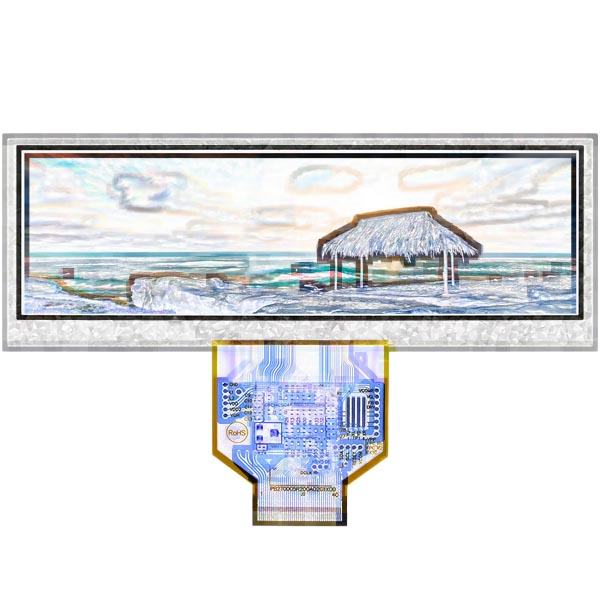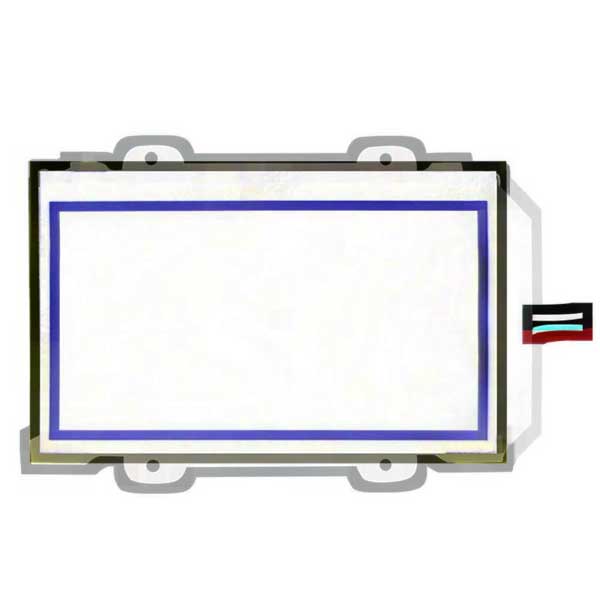Are you tired of staring at blurry and flickering screens? Are you looking for a display technology that is clear, crisp, and reliable? Look no further, because LCD (Liquid Crystal Display) is here to change the game.
LCDs are everywhere, from your smartphone to your TV to your computer. They are the technology behind the clear and vibrant images we see every day. But what exactly is an LCD and how does it work? In this article, we will take you on a journey to decode the world of LCDs.
First, we’ll take a closer look at the building blocks of LCDs. You’ll learn about the different components that make up an LCD and how they work together to produce the images we see. Then, we’ll delve into the magic behind LCDs and explore how liquid crystals are controlled to produce different colors and shades.
Next, we’ll cover the ABCs of LCD technology. We’ll explain the basic principles of how LCDs work, from the backlighting to the polarizers, and everything in between. You’ll have a better understanding of the technology and why it is so popular in today’s devices.
We’ll also explore the different faces of LCDs, from standard to high-definition, from twisted nematic to in-plane switching. You’ll see how LCDs have evolved over the years and the different options available today.
Finally, we’ll discuss why LCDs are the clear choice for today’s devices. You’ll learn about the advantages of LCDs over other display technologies, such as CRT (Cathode Ray Tube) and OLED (Organic Light-Emitting Diode). You’ll see why LCDs are the go-to choice for manufacturers, and why they are likely to remain the dominant technology for years to come.
So, buckle up and get ready to embark on an exciting journey to discover the world of LCDs!
A closer look: The building blocks of LCDs
LCDs have become ubiquitous in our daily lives, powering everything from smartphones to smartwatches, laptops, and even televisions. They provide clear and vibrant images that allow us to interact with our devices seamlessly and intuitively. But what exactly are the building blocks of LCDs, and how do they work together to produce the crystal-clear images we see every day?
To understand LCD technology, we must first explore the components that make up an LCD. At the heart of an LCD is a liquid crystal layer, which is sandwiched between two sheets of polarizing material. This layer is then attached to a series of electrodes that are used to manipulate the liquid crystals and produce different colors and shades.
Next, we must delve into the magic behind LCDs and how liquid crystals are controlled to produce different colors and shades. Liquid crystals are unique materials that can change their orientation when exposed to an electric field. This change in orientation allows different amounts of light to pass through the polarizing material, producing the colors and shades that we see on the screen.
The basic principles of how LCDs work involve a complex interplay between several components. These include the backlighting, the color filters, and the glass substrate. These components work together to produce the images we see on the screen. So each component plays a critical role in the overall performance of the LCD.
Over the years, LCD technology has continued to evolve with new options emerging. These provide even higher levels of clarity and resolution. One of the most significant developments in LCD technology has been the introduction of in-plane switching (IPS) technology. This technology allows for even wider viewing angles. And it improved color accuracy, making it ideal for a range of applications.
Finally, LCDs offer several advantages over other display technologies. For example, such as CRT and OLED. In addition, LCDs are known for their high levels of reliability. They are known for their long lifespan, and low power consumption, too. These benefits make LCDs the go-to choice for manufacturers. Overall, for those who are looking to create high-quality displays for their products.
In closing, a closer look at the building blocks of LCDs reveals that these displays are a marvel of modern technology. They are the backbone of our digital lives. They provide us with the crisp and clear images we need to stay connected and engaged. So we can expect to see even more innovative uses for these displays in the future. Because LCD technology continues to evolve.
Understanding the magic behind LCDs
LCDs, or Liquid Crystal Displays, are one of the most popular display technologies available today. They are used in a wide variety of devices, including smartphones, televisions, and computer monitors. But how exactly do LCDs work, and what is the magic behind them?
At its most basic level, an LCD is made up of several layers of material that work together to create an image. The layers include a backlight, a polarizer, a layer of liquid crystal material, and another polarizer. The liquid crystal layer is what allows the display to change colors and create images.
The magic behind LCDs is how they control the liquid crystal layer to create colors and shades. Liquid crystals can change how light passes through them with an electric current. This process allows LCDs to display clear and vibrant images with accurate colors.
By understanding how LCDs work, users can appreciate the technology that powers their devices.
Liquid crystal molecules align in different ways when an electric current is applied. This can either allow or block light from passing through.
Transistors control the alignment of the liquid crystal molecules in LCDs. The display’s thin-film transistor (TFT) array contains transistors. They are responsible for controlling a small section of the display. This allows for precise control over the colors and shades displayed on the screen.
In addition to the TFT array, other important components make up an LCD. These include color filters. This helps to produce accurate and vibrant colors. And these help the driver circuitry, too. The driver circuitry controls the flow of electricity to the display.
One of the key benefits of LCDs is their ability to produce high-quality images with vibrant colors and excellent contrast. This is due in part to the use of color filters, which help to produce accurate and true-to-life colors. The use of polarizers also helps to improve contrast and reduce glare, making LCDs easy to view in a variety of lighting conditions.
There are also several different types of LCD technology, each with its unique characteristics and benefits. For example, their fast response times and low power consumption. They make them ideal for use in smartphones and other portable devices. In-plane switching (IPS) displays, on the other hand, are known for their wide viewing angles and excellent color accuracy. It makes them a popular choice for computer monitors and televisions.
LCDs are important in delivering clear and vibrant images to our devices. It’s important to understand the magic behind their technology. It is to better appreciate the benefits and advantages of LCDs. When users learn about the different parts of an LCD and the process by which liquid crystals are controlled to produce images, they can have a better understanding of how their devices work. This understanding can help users make informed decisions about the devices they purchase and use. Knowing how an LCD works can also help users troubleshoot any issues they may encounter with their devices. Whether you’re using a smartphone, a television, or a computer monitor, LCDs are likely playing a key role in the display of the images on your device.
The ABCs of LCD technology
LCD (Liquid Crystal Display) technology is widely used in today’s electronic devices. Indeed, from smartphones to televisions. However, understanding how it works can be a bit confusing. Especially when it comes to the various components that make up an LCD. In this article, we will take a closer look at the ABCs of LCD technology, breaking down the basic principles of how LCDs work and the components that make them function.
- The first component to discuss is backlighting. The backlight is what provides the light source for an LCD. Without a backlight, the display would be dark and unreadable. Two types of backlights are commonly used in LCDs: CCFL (Cold Cathode Fluorescent Lamp) and LED (Light Emitting Diode). CCFL was the standard backlight for many years but has been largely replaced by LED backlighting, which offers better energy efficiency and a longer lifespan.
- The second component to discuss is the polarizers. Polarizers are thin layers of material that are used to filter and control the light that passes through the LCD. The polarizers are placed on either side of the liquid crystal layer. They are responsible for producing the desired color and intensity of the display. They also play a role in controlling the brightness and contrast of the display.
- The third component to discuss is the liquid crystal layer. This is the layer that makes an LCD unique. The liquid crystals can change the way that light passes through them, depending on the electric current that is applied. This is what allows an LCD to produce images with vibrant colors and shades. The liquid crystal layer is controlled by transistors, which are part of the display’s thin-film transistor (TFT) array.
- The fourth component to discuss is the color filters. Color filters are used to produce the various colors that are displayed on an LCD screen. They work by filtering out specific colors from the backlight. And they allow other colors to pass through the liquid crystal layer. The color filters are placed on top of the liquid crystal layer. So they are responsible for producing the final color of the image.
- The final component to discuss is the glass substrate. The glass substrate is the foundation of the LCD. It provides a solid and stable surface on which the various components of the display can be placed. The glass substrate is often made from tempered glass, which is strong and durable and helps to protect the delicate components of the display.
Understanding the ABCs of LCD technology is important in knowing how your electronic device works. The different components of an LCD work together to produce clear and vibrant images. These are such as the backlight, polarizers, liquid crystal layer, color filters, and glass substrate. With this knowledge, users can confidently select devices that meet their needs and get the most out of their electronic devices.
Exploring the different faces of LCDs
Are you curious to know more about the different types of LCDs available in the market?
Standard LCDs are the most common type of LCD. These displays have been used in electronic devices for many years, from calculators to digital clocks. Standard LCDs work by using a backlight and polarizing filters to display information. While these displays are not as advanced as newer technologies, they are still reliable and widely used.
The next type of LCD is high-definition LCD. These displays are designed to produce images with greater detail and clarity than standard displays. High-definition LCDs come in a range of resolutions, from 720p to 4K, allowing for greater levels of detail and color reproduction. These displays are commonly used in televisions, computer monitors, and mobile devices.
One of the most significant advances in LCD technology is the twisted nematic (TN) display. TN displays use liquid crystal molecules that rotate to allow light to pass through the display when an electric current is applied. They are relatively affordable. And they have a quick response time. It makes them ideal for gaming monitors and fast-action videos.
Another type of LCD is in-plane switching (IPS). IPS displays use a different arrangement of liquid crystal molecules. These molecules are aligned parallel to the substrate. It allows for more accurate color reproduction and wider viewing angles. IPS displays are used in high-end monitors, televisions, and mobile devices.
Moreover, another type of LCD commonly used in electronic devices is the TFT (Thin Film Transistor) display. TFT displays use thin film transistors to control the flow of current to each pixel in the display. So it allows for a high level of precision in the display of images. TFT displays are known for their high resolution and color accuracy, making them a popular choice for computer monitors, laptops, and mobile devices.
Finally, LCD technology has many faces, each with its unique features and benefits. Standard LCDs are reliable and widely used. While high-definition LCDs provide more detail and clarity. Twisted nematic and in-plane switching displays offer a wider viewing angle. So they are ideal for gamers and those looking for color accuracy. Choosing the right LCD technology for your needs is essential to ensure that you get the best performance and value from your electronic devices.
Why LCDs are the clear choice for today’s devices
LCD (Liquid Crystal Display) technology has become an essential part of modern electronic devices. LCDs have replaced traditional Cathode Ray Tube (CRT) displays in almost all devices. Actually, from smartphones to televisions. In this section, we will explore why LCDs are the clear choice for today’s devices.
Firstly, LCDs are known for their superior image quality. The images produced by LCDs are clear, sharp, and vibrant. This is since LCDs are backlit displays. They use a combination of polarizers, color filters, and liquid crystal layers to produce the images. This process allows for precise control over the colors and shades displayed. So it results in images that are more true-to-life than those produced by CRT displays.
Another reason why LCDs are the clear choice for today’s devices is their durability. LCDs are made up of several layers of glass, making them less susceptible to scratches and cracks. Moreover, LCDs can withstand exposure to various temperatures. They can withstand exposure to humidity levels, and atmospheric pressure, too. It makes them ideal for use in different environments.
In addition to durability, LCDs are also known for their energy efficiency. LCDs use less power than CRT displays. It makes them more environmentally friendly and cost-effective. This makes them an ideal choice for portable devices. For example, such as laptops and smartphones. This is where battery life is a critical consideration.
LCDs also offer flexibility in terms of size and shape. LCD technology can be used to create displays of various sizes, from small smartphone screens to large television screens. Additionally, LCD technology can be used to create displays with different shapes, such as curved screens.
When it comes to choosing between different display technologies, LCDs have several advantages over other technologies. CRT displays, for instance, are bulkier, less energy-efficient, and less durable than LCDs. OLED (Organic Light Emitting Diode) displays, on the other hand, are still a relatively new technology and can be expensive to produce.
LCD Displays are past, present and future
LCDs are a popular choice for manufacturers of electronic devices. It is because of the superior image quality they offer. This is due to the use of color filters and backlighting. It produces clear and vibrant images that are easy on the eyes.
LCDs are also known for their durability. It makes them ideal for use in devices that are exposed to harsh environments or heavy use. They can withstand extreme temperatures, shock, and vibration. So it makes them ideal for use in industrial equipment, for example. And it is ideal for use in medical devices, and military applications, too.
Another advantage of LCDs is their energy efficiency. Compared to other display technologies like CRTs, LCDs consume less power. So it makes them a more eco-friendly choice for electronic devices. This not only benefits the environment. But also helps consumers save money on their energy bills.
LCDs can be customized to fit various shapes and sizes. It makes them ideal for use in many types of electronic devices. This flexibility is one of the reasons why LCD technology is so widely used and popular today. For instance, LCDs can be found in small handheld devices. These devices are smartphones and tablets. As well as in larger electronic products like televisions and monitors. The lightweight and slim design of LCDs also makes them easy to transport and install. It makes them a practical choice for on-the-go applications like laptops and gaming devices. With their flexibility in size and shape, LCDs can be tailored to fit virtually any device, providing clear and vibrant images in a range of different settings.
LCDs have come a long way since their inception and have undergone significant advancements in recent years. One of the most significant advancements is the development of higher resolutions. It allows for more detailed and realistic images. Additionally, advancements in backlighting and color reproduction technology have contributed to the improvement of color accuracy. And they have contributed to contrast ratios. It results in more vibrant and lifelike images. The reduced response times of LCDs have also made them more suited for fast-paced applications. For example, such as gaming and sports.
Energy efficiency has also become a top priority in recent years. So LCD technology has responded by becoming more power-efficient. This not only helps reduce energy costs. But also has a positive impact on the environment. How? By lowering the carbon footprint of electronic devices. As technology continues to evolve, LCDs will likely continue to improve. Of course, in terms of both image quality and energy efficiency.
Overall, the many benefits and advantages of LCDs make them a clear choice for today’s electronic devices. Whether you’re using a smartphone, a tablet, a television, or any other electronic device, chances are that an LCD is behind the clear and vibrant images you see.
References
Liu, Q., & Abbatt, J. P. (2021). Liquid crystal display screens as a source for indoor volatile organic compounds. Proceedings of the National Academy of Sciences, 118(23), e2105067118.
Miller, M. E., & Miller, M. E. (2019). LCD Display Technology. Color in Electronic Display Systems: Advantages of Multi-primary Displays, 87-105.
Bisoyi, H. K., & Li, Q. (2021). Liquid crystals: versatile self-organized smart soft materials. Chemical reviews, 122(5), 4887-4926.
Zhang, S., Xu, B., Elsayed, M., Nan, F., Liang, W., Valley, J. K., … & Wheeler, A. R. (2022). Optoelectronic tweezers: a versatile toolbox for nano-/micro-manipulation. Chemical Society Reviews.
Li, J., Bisoyi, H. K., Tian, J., Guo, J., & Li, Q. (2019). Optically rewritable transparent liquid crystal displays enabled by light‐driven chiral fluorescent molecular switches. Advanced Materials, 31(10), 1807751.






